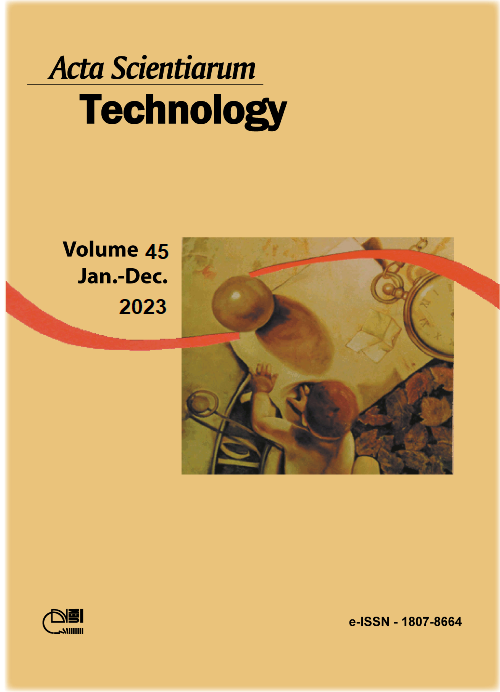Physicochemical characteristics and bioactive compounds of three puçá (Mouriri pusa Gardner) varieties, an underexploited fruit from the Brazilian Cerrado
DOI:
https://doi.org/10.4025/actascitechnol.v45i1.61765Palavras-chave:
ascorbic acid; Brazilian fruit; carotenoids; HPLC - DAD; phenolic compounds.Resumo
Puçá fruits are native to the Cerrado biome yet little explored, presenting different varieties with distinct fruit peel colors. Although puçá fruits have been known to exhibit a good source of bioactive compounds, the phenolic profile of some varieties remains unknown. Based on this context, our research aimed to evaluate the chemical composition and bioactive compounds and characterize for the first time the phenolic profile in yellow puçá, brown puçá, and black puçá by high-performance liquid chromatography coupled with diode array detection (HPLC - DAD). The three puçá varieties contained considerable quantities of important food constituents, such as high concentrations of vitamin C, carotenoids and phenolic compounds. These fruits are mostly composed of phenolic acids, with p-coumaric acid being the major compound in all varieties, while ellagic acid was detected only in the brown puçá. Moreover, (−)-epicatechin was found only in the yellow puçá. This study is the first to report the identification of the phenolic profile in puçá. Moreover, our data indicate that the three fruit varieties present a promising chemical composition, suggesting that they may serve as potential sources of natural antioxidants. In addition, these findings can contribute to the establishment of puçá as a novel ingredient for formulations with functional claims.
Downloads
Referências
Downloads
Publicado
Como Citar
Edição
Seção
Licença
DECLARAÇíO DE ORIGINALIDADE E DIREITOS AUTORAIS
Declaro que o presente artigo é original, não tendo sido submetido í publicação em qualquer outro periódico nacional ou internacional, quer seja em parte ou em sua totalidade.
Os direitos autorais pertencem exclusivamente aos autores. Os direitos de licenciamento utilizados pelo periódico é a licença Creative Commons Attribution 4.0 (CC BY 4.0): são permitidos o compartilhamento (cópia e distribuição do material em qualqer meio ou formato) e adaptação (remix, transformação e criação de material a partir do conteúdo assim licenciado para quaisquer fins, inclusive comerciais.
Recomenda-se a leitura desse link para maiores informações sobre o tema: fornecimento de créditos e referências de forma correta, entre outros detalhes cruciais para uso adequado do material licenciado.















